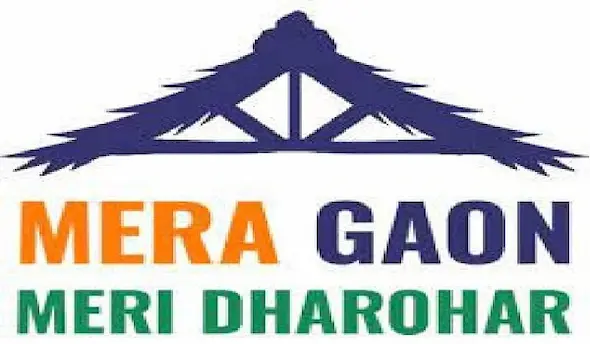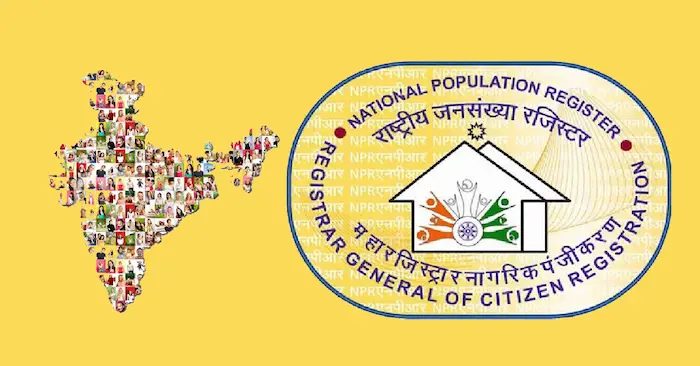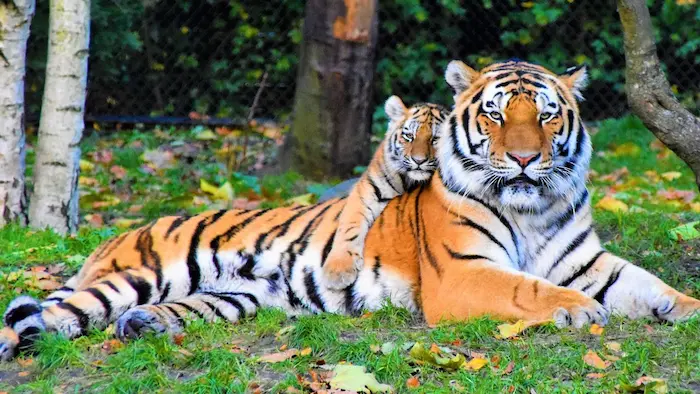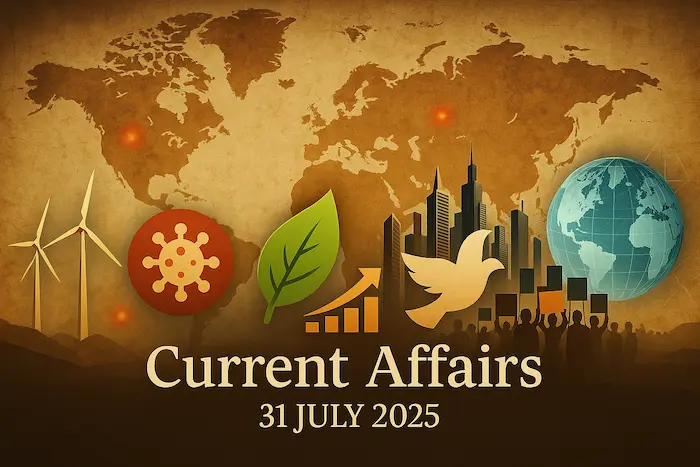1. Mera Gaon Meri Dharohar (MGMD) Initiative – Indian Society

Why in News?
The Central Government has successfully documented the cultural heritage of over 4.7 lakh villages under the Mera Gaon Meri Dharohar initiative, celebrating India’s grassroots cultural diversity.
What is the Mera Gaon Meri Dharohar (MGMD) Initiative?
- Launched: 27th July 2023
- Ministry: Ministry of Culture
- Implementing Agency: Indira Gandhi National Centre for the Arts (IGNCA)
- Under: National Mission on Cultural Mapping (NMCM)
- As part of: Azadi Ka Amrit Mahotsav celebrations
Objective of the Initiative
- Cultural Mapping of over 6.5 lakh villages across India.
- To preserve and promote India’s intangible cultural heritage.
- To provide a digital platform showcasing local traditions, crafts, folklore, festivals, and historical relevance of villages.
- Encouraging economic growth, social cohesion, and artistic development in rural India through cultural awareness.
Categories of Mapping
Villages are classified under multiple heritage-based categories:
- Arts and Crafts Villages – Known for traditional artisanal work (e.g. Madhubani painting, Channapatna toys).
- Ecologically Oriented Villages – Practicing sustainable agriculture, water conservation, etc.
- Scholastic Villages – Associated with ancient texts, education systems, or scriptural traditions.
- Epic Villages – Linked with stories from the Ramayana, Mahabharata, or Puranas.
- Historical Villages – With notable local or national historical significance.
- Architectural Heritage Villages – Featuring unique vernacular or ancient architectural styles.
- Other Themes – Including fishing villages, horticulture-focused communities, etc.
Significance
- Cultural Preservation: Helps conserve oral traditions, folklore, music, festivals, and crafts under threat from modernization.
- Digital Empowerment: A virtual platform enhances accessibility to India’s rural heritage for researchers, tourists, and the public.
- Inclusive Development: Promotes rural pride and identity, potentially attracting tourism and investment.
- Educational Value: Serves as a repository for younger generations to learn about their heritage.
- Social Integration: Encourages community participation, inter-cultural understanding, and harmony.
Exam Connect – Possible Questions
Prelims
1. The Mera Gaon Meri Dharohar (MGMD) initiative is implemented under which of the following missions?
A. National Mission for Manuscripts
B. National Mission on Cultural Mapping
C. National Mission for Heritage Conservation
D. National Mission on Intangible Cultural Assets
Answer: B. National Mission on Cultural Mapping
2. Which of the following is NOT one of the categories under the MGMD cultural village mapping?
A. Historical Village
B. Epic Village
C. Technological Innovation Village
D. Ecologically Oriented Village
Answer: C. Technological Innovation Village
Mains
1. Mera Gaon Meri Dharohar initiative is a step toward preserving India’s intangible rural heritage. Examine its potential role in promoting inclusive development and cultural identity in Indian villages. (250 words)
2. Discuss the role of digital initiatives in preserving India’s rural cultural heritage. How can such efforts strengthen the bond between tradition and modernity in Indian society? (250 words)
2. NASA-ISRO Synthetic Aperture Radar (NISAR) – Science & Technology

Why in News?
The NASA-ISRO Synthetic Aperture Radar (NISAR) satellite is scheduled for launch from Sriharikota aboard the GSLV Mk-II. It is a landmark collaboration between the United States and India aimed at high-resolution Earth observation.
What is NISAR?
NISAR is the world’s first dual-frequency radar satellite mission, jointly developed by:
- NASA (National Aeronautics and Space Administration)
- ISRO (Indian Space Research Organisation)
It will map Earth’s surface changes with high precision, enhancing understanding of natural disasters, climate change, agriculture, and infrastructure stability.
Mission Specifications
| Feature | Description |
|---|---|
| Launch Vehicle | GSLV Mk-II (India) |
| Launch Site | Satish Dhawan Space Centre, Sriharikota |
| Orbit | Sun-synchronous polar orbit (747 km altitude, 98.4° inclination) |
| Mission Life | Planned for 3 years, design life > 5 years |
| Data Access | Free, near real-time; disaster maps within 5 hours |
| Daily Data Output | 80 TB/day |
Key Hardware Contributions
| Agency | Contribution |
|---|---|
| NASA | L-band SAR (1.257 GHz), 12-meter antenna, avionics |
| ISRO | S-band SAR (3.2 GHz), satellite bus, launch services |
What is Synthetic Aperture Radar (SAR)?
SAR is an advanced radar system that:
- Works day and night and in all weather conditions.
- Simulates a large radar antenna using satellite motion.
- Penetrates clouds, vegetation, and topsoil to detect surface changes.
NISAR’s Dual-Band Capabilities
| SAR Band | Function |
|---|---|
| L-band SAR (NASA) | Deeper penetration – ideal for forests, tectonics, glaciers, permafrost |
| S-band SAR (ISRO) | Surface-level details – useful for agriculture, biomass, and flood monitoring |
Other Technical Features:
- Radar Antenna: 12-meter deployable mesh reflector
- Resolution: 3–10 meters (spatial); centimetre-level vertical accuracy
- Swath Width: 240 km
- Revisit Cycle: Global coverage every 12 days (less frequent in polar zones)
Applications & Significance
Disaster Management
- Provides before-and-after imagery of earthquakes, floods, and landslides for quick response and planning.
Climate Change Monitoring
- Tracks glacier melt, ice sheet loss, and forest degradation to study climate impact.
Agriculture
- Monitors crop health, irrigation cycles, and seasonal productivity for food security.
Infrastructure Monitoring
- Detects land subsidence near dams, roads, and urban areas.
Strategic Importance
- First mission with dual-frequency SAR onboard.
- Enhances India–US space cooperation.
- Boosts India’s Earth observation capability, supporting the Digital India and environmental governance agenda.
Exam Connect – Possible Questions
Prelims
1. With reference to the NISAR mission, consider the following statements:
1.It is a joint collaboration between NASA and ISRO.
2. It will carry only L-band radar to map Earth’s surface.
3. It aims to monitor natural disasters, agriculture, and climate-related changes.
Which of the above statements is/are correct?
A. 1 and 3 only
B. 2 and 3 only
C. 1 only
D. 1, 2, and 3
Answer: A. 1 and 3 only
2. What is the primary advantage of Synthetic Aperture Radar (SAR)?
A. It requires clear weather to operate effectively
B. It can only operate during the daytime
C. It can penetrate clouds and vegetation
D. It uses optical imaging for high-resolution data
Answer: C. It can penetrate clouds and vegetation
Mains
1. The NASA-ISRO Synthetic Aperture Radar (NISAR) represents a major leap in Earth observation technology. Discuss its applications in environmental monitoring, agriculture, and disaster management. (250 words)
2. Highlight the significance of international collaborations in space missions with reference to the NISAR project. How can such partnerships benefit India’s scientific and strategic interests? (250 words)
3. National Population Register (NPR) – Indian Society

Why in News?
The Government of India has clarified in the Lok Sabha that no final decision has been taken on updating the National Population Register (NPR) in connection with the upcoming Population Census 2027.
What is the NPR?
The National Population Register (NPR) is a register of all “usual residents” in India.
- “Usual Resident”: A person who has lived in a local area for at least 6 months, or intends to stay for the next 6 months.
- Mandatory: Registration is compulsory for all usual residents of India.
- Conducted by: Office of the Registrar General of India (RGI), under the Ministry of Home Affairs.
Legal and Historical Background
| Feature | Details |
|---|---|
| Legal Basis | Citizenship Act, 1955 and Citizenship Rules, 2003 |
| First Created | 2010 (House Listing Phase of Census 2011) |
| Last Updated | 2015–16 (via door-to-door survey) |
| Current Size | Contains demographic data of approx. 119 crore residents |
| Excluded State | Assam (due to completion of NRC process) |
Scope and Data Collected
| Type of Data | Details |
|---|---|
| Demographic Data | Name, age, sex, relationship, marital status, nationality, education, occupation, etc. |
| Biometric Data | Sourced from Aadhaar enrollment: fingerprints, iris scans, photographs |
| Administrative Coverage | Data collected at local, sub-district, district, state, and national levels |
NPR and Aadhaar Link
- Biometric data collected under NPR is linked with Aadhaar.
- In the 2020 NPR update plan, ration card data was proposed to be excluded.
- However, due to Aadhaar’s expanded utility in welfare schemes, NPR update has lost policy priority.
NPR vs. NRC: Key Differences
| Feature | NPR | NRC |
|---|---|---|
| Purpose | List of all usual residents | List of Indian citizens |
| Inclusion | Citizens + Non-citizens | Only Indian citizens |
| Legal Basis | Citizenship Act, 1955 & Citizenship Rules, 2003 | Citizenship Rules, 2003 |
| Usage | Welfare delivery, demographic profiling | Citizenship verification |
| Mandatory? | Yes (across India except Assam) | No (not nationwide) |
Importance of NPR in Indian Society
- Demographic Planning: NPR serves as a baseline database for welfare delivery, especially in schemes like PDS, Ujjwala, and Ayushman Bharat.
- Social Integration: It enables inclusive policymaking by identifying population clusters and their socio-economic profiles.
- Governance Efficiency: Helps avoid duplication and fraud in welfare schemes by authenticating identities.
- Controversy & Concerns: NPR has been controversial when linked to NRC, leading to concerns about citizenship verification, especially among marginalized groups.
Exam Connect – Possible Questions
Prelims
1. Consider the following statements regarding the National Population Register (NPR):
1.It includes biometric data collected independently of Aadhaar.
2. Registration in NPR is voluntary.
3. NPR is conducted by the Ministry of Home Affairs.
Which of the statements is/are correct?
A. 1 and 3 only
B. 2 and 3 only
C. 3 only
D. 1, 2, and 3
Answer: C. 3 only
2. Which of the following states is excluded from the National Population Register process?
A. Tripura
B. Assam
C. Kerala
D. Manipu
Answer: B. Assam
Mains
1. What is the National Population Register (NPR)? Examine its objectives, implementation challenges, and its relevance in the context of inclusive governance. (250 words)
2. Compare and contrast the National Population Register (NPR) with the National Register of Citizens (NRC). What are the implications of linking the two in the Indian socio-political context? (250 words)
4. Sundarbans Set to Become India’s Second-Largest Tiger Reserve – Environment

Why in News?
The National Tiger Conservation Authority (NTCA) has cleared a proposal to expand the Sundarbans Tiger Reserve (STR) by 1,100 sq km. The proposal is now pending final approval from the National Board for Wildlife (NBWL).
Key Details about the Sundarbans Tiger Reserve
| Feature | Details |
|---|---|
| Location | Southern tip of the Gangetic Delta, West Bengal |
| Current Area | 2,585.89 sq km |
| Proposed Expansion | To 3,629.57 sq km |
| Districts Covered | South & North 24-Parganas |
| Status | Tiger Reserve, National Park, Biosphere Reserve, and UNESCO World Heritage Site |
Ecological Importance of STR
- Unique Habitat: The only mangrove forest in the world to support a viable population of tigers.
- Tiger Population: Over 100 Royal Bengal Tigers — 80 in the core area and 21 in the buffer/adjacent forests.
- Conservation Significance: Expansion would make STR India’s second-largest tiger reserve after Nagarjunasagar-Srisailam Tiger Reserve (Andhra Pradesh–Telangana).
Biodiversity in Sundarbans
Flora:
- Dominated by mangrove species:
- Avicennia
- Rhizophora
- Heritiera fomes (Sundari tree, namesake of the region)
Fauna:
- Flagship Species: Royal Bengal Tiger
- Other Species:
- Fishing Cats
- Estuarine Crocodiles
- Irrawaddy Dolphins
- Monitor Lizards
- King Cobras
- Numerous endangered birds, reptiles, and amphibians
Geographic Boundaries of STR
| Direction | Boundary |
|---|---|
| East | Bangladesh border (Raimangal, Harinbhanga rivers) |
| South | Bay of Bengal |
| North & West | Matla, Bidya, and Gomdi Rivers |
Environmental & Strategic Significance
- Mangrove Ecosystem: Acts as a natural buffer against cyclones, storm surges, and coastal erosion.
- Carbon Sink: Mangroves are powerful carbon sequesters—critical in climate change mitigation.
- Biodiversity Hotspot: Enhances India’s status as a mega-diverse country.
- Climate Vulnerability: The delta is highly prone to sea-level rise, making conservation efforts urgent.
- Cross-border Ecosystem: Sundarbans is shared between India and Bangladesh, making transboundary cooperation essential.
Exam Connect – Possible Questions
Prelims
1. Consider the following statements about the Sundarbans Tiger Reserve:
1.It is the only tiger reserve located in a mangrove ecosystem.
2. It is part of the UNESCO World Heritage Site list.
3.It is located in Odisha and West Bengal.
Which of the above statements is/are correct?
A. 1 and 2 only
B. 2 and 3 only
C. 1 and 3 only
D. 1, 2, and 3
Answer: A. 1 and 2 only
2. The Sundarbans ecosystem is known for which of the following?
1.Estuarine Crocodiles
2.Heritiera mangroves
3.Royal Bengal Tigers
4.Olive Ridley Turtles
Choose the correct option:
A. 1, 2, and 3 only
B. 1 and 4 only
C. 2 and 3 only
D. All of the above
Answer: A. 1, 2, and 3 onl
Mains
1. Discuss the ecological significance of the Sundarbans Tiger Reserve and the impact of its proposed expansion on conservation and biodiversity protection. (250 words)
2. Mangrove ecosystems are critical for both biodiversity and climate resilience. Analyze the role of the Sundarbans in coastal protection and wildlife conservation. (250 words)
5. Five Years of the National Education Policy (2020) – Indian Society

Why in News?
The National Education Policy (NEP) 2020 marks its fifth anniversary since being adopted in July 2020. It replaced the National Policy on Education, 1986, introducing a transformative roadmap for the Indian education system.
Background and Drafting
- Drafted by: Committee headed by Dr. K. Kasturirangan
- Ministry: Ministry of Education
- Vision: To transform India into a knowledge society by developing every learner’s potential
- Global Alignment: Linked with UN Sustainable Development Goal (SDG) 4 – Quality Education
Five Foundational Pillars of NEP 2020
- Access – Universal education for all age groups
- Equity – Bridging socio-economic and gender gaps
- Quality – Modern, research-based pedagogy
- Affordability – Cost-effective education solutions
- Accountability – Transparent governance and implementation
Key Reforms in School Education
| Reform Area | Details |
|---|---|
| Structure Change | New 5+3+3+4 curriculum replaces the 10+2 model (age-based stages: Foundation, Preparatory, Middle, Secondary) |
| ECCE Focus | Early Childhood Care and Education (ECCE) for ages 3–8; learning via “Jaadui Pitara” kits |
| Basic Literacy & Numeracy | National Initiative for Proficiency in Reading with Understanding and Numeracy (NIPUN Bharat) |
| Medium of Instruction | Preferably in mother tongue/regional language till Grade 5 |
| Vocational Training | Starts from Grade 6, includes hands-on internships |
| Assessment Reforms | Introduction of PARAKH – Performance Assessment, Review, and Analysis of Knowledge for Holistic Development |
| Play-Based Learning | Vidya Pravesh: A three-month preparatory module for Grade 1 students |
| Competency-Based Testing | SAFAL Assessments for Grades 3, 5, and 8 |
Major Higher Education Reforms
| Reform Area | Details |
|---|---|
| Four-Year UG Programs | Multidisciplinary programs with multiple exit options (certificate/diploma/degree) |
| Credit Transfer | Academic Bank of Credit (ABC) and National Credit Framework allow mobility across institutions |
| Research Promotion | Establishment of National Research Foundation (NRF) |
| Single Regulator | Proposal for Higher Education Commission of India (HECI) to oversee all non-medical higher education |
| Language Promotion | Launch of Indian Institute of Translation and Interpretation (IITI) to promote regional languages |
| Technical Education in Local Languages | Encouraged by AICTE, with textbooks and courses now offered in regional languages |
| Common Admissions | Rollout of Common University Entrance Test (CUET) for central university admissions |
Digital Infrastructure & Global Outreach
- National Digital Education Architecture (NDEAR): Unified tech platform for digital learning
- Global Footprint: Indian institutions like IIT Zanzibar and IIM Dubai established abroad
- Internationalisation: Foreign universities now allowed to set up campuses in India
Key Achievements So Far
- New Curriculum: NCERT released revised content for Classes 1–8
- Wider ECCE Implementation: Adopted across several states
- Regional Language Use: Expanded at foundational education levels
- Academic Flexibility: ABC and multiple exit-entry points successfully piloted
- Global Collaboration: India is actively encouraging academic partnerships and overseas campuses
Societal Significance
- Promotes Inclusivity: Reduces barriers due to language, gender, and economic status
- Fosters Equity in Access: Focus on rural and marginalized communities
- Builds Human Capital: Links education with vocational and life skills
- Strengthens National Identity: Emphasizes Indian languages and cultural context
- Aligns with Demographic Dividend: Prepares India’s large youth population for a dynamic global economy
Exam Connect – Possible Questions
Prelims
1. The National Education Policy (2020) recommends which of the following changes to the school structure?
A. 10+2 model
B. 5+3+3+4 model
C. 6+3+3 model
D. 5+4+3 model
Answer: B. 5+3+3+4 model
2. Which of the following initiatives under NEP 2020 focuses on early childhood education?
A. SAFAL
B. Vidya Pravesh
C. Jaadui Pitara
D. PARAKH
Answer: C. Jaadui Pitara
Mains
1. The National Education Policy (2020) is a paradigm shift in India’s educational philosophy. Critically examine its implications for equity, quality, and employability. (250 words)
2. Discuss the significance of NEP 2020 in promoting mother tongue-based education at the foundational level. What challenges do you foresee in its implementation across diverse linguistic regions? (250 words)
6. International Tiger Day, 2025 – Environment

Why in News?
On 29th July 2025, India joined 12 other tiger-range countries to celebrate International Tiger Day, reinforcing its commitment to tiger conservation and sustainable coexistence with wildlife.
What is International Tiger Day?
- Also Known As: Global Tiger Day
- Observed On: 29th July every year
- Established At: Saint Petersburg Tiger Summit, Russia (2010)
- Purpose: To raise global awareness about:
- The critical status of wild tiger populations
- The urgency of conserving tiger habitats
- The importance of collaborative and community-driven conservation strategies
Theme for 2025
“Empowering Indigenous Peoples and Local Communities in Tiger Conservation”
This year’s theme acknowledges the vital role played by forest dwellers, tribal communities, and local stakeholders in protecting tiger habitats through traditional knowledge and sustainable practices.
Tiger Conservation in India: Key Highlights
| Aspect | Detail |
|---|---|
| Tiger Population (2025) | Over 3,600 wild tigers (approx. 75% of the global tiger population) |
| Tiger Habitat | Approx. 138,200 sq km of forested area |
| No. of Tiger Reserves | 53 reserves across 18 states (as of 2025) |
| Flagship Program | Project Tiger (launched in 1973) |
| Coordinating Authority | National Tiger Conservation Authority (NTCA) |
| Conservation Recognition | India’s model of community-based conservation is seen as a global success story |
About Project Tiger
- Launched: 1973 under Prime Minister Indira Gandhi
- Objective: Ensure viable population of Bengal tigers in their natural habitats
- Approach:
- Creation of core and buffer zones
- Strict protection measures
- Voluntary relocation of human settlements
- Integration of local communities in eco-development
Global Perspective
- There are 13 tiger-range countries including India, Bangladesh, Nepal, Bhutan, China, Russia, Malaysia, Indonesia, Thailand, and others.
- Tiger population globally had dipped below 3,200 in 2010, sparking global concern.
- Target of “Tx2” (Doubling tiger numbers by 2022) was adopted at the Saint Petersburg Summit.
Why Tiger Conservation Matters?
- Ecological Role: Tigers are apex predators and key to maintaining the balance of forest ecosystems.
- Forest Health Indicator: Their presence reflects rich biodiversity and healthy habitats.
- Climate Benefits: Protecting tiger habitats safeguards carbon-rich forests, crucial for climate mitigation.
- Livelihood Linkage: Ecotourism in tiger reserves supports rural and tribal economies.
- Cultural Significance: Tigers hold symbolic and spiritual importance in Indian mythology and folklore.
Challenges in Tiger Conservation
- Habitat Fragmentation due to infrastructure and urban expansion
- Human-Wildlife Conflict in fringe villages
- Poaching and Illegal Wildlife Trade
- Climate Change affecting mangroves (e.g., Sundarbans) and grasslands
- Lack of community incentives in buffer zones
Way Forward
- Strengthen community-led conservation models
- Expand eco-development programs and alternative livelihoods
- Improve corridor connectivity between tiger reserves
- Enhance use of technology and camera traps for monitoring
- Ensure interstate and transboundary cooperation (especially with Nepal and Bhutan)
Exam Connect – Possible Questions
Prelims
1. International Tiger Day, also known as Global Tiger Day, was established in which of the following events?
A. UN Earth Summit, 1992
B. Saint Petersburg Tiger Summit, 2010
C. CITES Convention, 1975
D. CBD Conference, 2002
Answer: B. Saint Petersburg Tiger Summit, 2010
2. Consider the following statements regarding tiger conservation in India:
1.India hosts over 70% of the world’s wild tigers.
2. Project Tiger was launched in 1980.
3. The National Tiger Conservation Authority operates under the Ministry of Environment, Forest and Climate Change.
Which of the statements are correct?
A. 1 and 2 only
B. 1 and 3 only
C. 2 and 3 only
D. 1, 2, and 3
Answer: B. 1 and 3 only
Mains
1. Discuss the role of community participation in the success of tiger conservation programs in India. Highlight recent initiatives that promote this approach. (250 words)
2. Despite significant achievements, tiger conservation in India continues to face multiple ecological and human challenges. Critically evaluate these challenges and suggest sustainable solutions. (250 words)
7. Pralay Missile: A Boost to India’s Tactical Strike Capabilities – Defence & Security

Why in News?
The Defence Research & Development Organisation (DRDO) has successfully conducted two back-to-back flight tests of the Pralay missile from Dr. APJ Abdul Kalam Island, off the Odisha coast. The tests mark a major milestone in enhancing India’s tactical missile arsenal.
What is Pralay Missile?
- Type: Quasi-ballistic, short-range surface-to-surface missile
- Origin: Indigenously developed by DRDO
- Purpose: Tactical battlefield missile capable of precision strikes
- Launch Platform: Mobile platforms, enhancing rapid deployment
Key Features
| Feature | Specification |
|---|---|
| Propulsion | Solid propellant motor |
| Range | 150–500 km |
| Payload Capacity | 500–1,000 kg (conventional warheads only) |
| Guidance System | Advanced inertial and satellite navigation systems |
| Accuracy | Circular Error Probable (CEP) of <10 meters |
| Terminal Speed | Up to Mach 6.1 |
| Flight Path Flexibility | Can change trajectory midair after a set distance |
Technology & Development
- Developed by: Research Centre Imarat (RCI), Hyderabad – a DRDO lab
- Industry Partners:
- Bharat Dynamics Ltd (BDL)
- Bharat Electronics Ltd (BEL)
- Multiple MSMEs involved in component manufacturing
Operational Significance
- Precision Strikes: Can neutralize high-value targets like enemy radar installations, forward bases, airstrips, and command centers.
- Mobile Launch Capability: Enhances mobility and survivability in forward areas.
- Quasi-ballistic Nature: Makes it harder to intercept, especially with mid-course trajectory shifts.
- Conventional Use: Unlike nuclear-capable missiles, Pralay is meant for tactical battlefield roles—fitting into conventional warfare doctrines.
Strategic Relevance for India
- Part of India’s “Rocket Force” vision: Pralay fits into the proposed plan for India’s dedicated missile force akin to China’s PLA Rocket Force.
- Deterrence without escalation: Provides India with a non-nuclear, high-precision option for conventional deterrence.
- Boost to Atmanirbhar Bharat: Demonstrates indigenous capability in advanced missile tech and defense manufacturing.
- Regional Security Posture: Enhances India’s stand-off strike capability in the context of threats from both China and Pakistan.
Exam Connect – Possible Questions
Prelims
1. Consider the following statements about the Pralay missile:
1. It is a nuclear-capable surface-to-surface missile.
2. It has a maximum range of 500 km.
3. It is developed by DRDO’s Research Centre Imarat.
Which of the above statements is/are correct?
A. 1 and 2 only
B. 2 and 3 only
C. 1 and 3 only
D. 1, 2, and 3
Answer: B. 2 and 3 only
2. Which of the following features makes the Pralay missile harder to intercept?
A. Liquid-fuel propulsion
B. Ability to change trajectory midair
C. Use of anti-radar homing
D. Use of cryogenic engine
Answer: B. Ability to change trajectory midair
Mains
1. The Pralay missile marks a new phase in India’s tactical deterrence doctrine. Discuss its technological features and strategic relevance in regional security. (250 words)
2. Indigenous development of short-range missiles like Pralay reflects India’s focus on self-reliance and battlefield preparedness. Evaluate the role of DRDO and Indian industry in strengthening missile defence capability. (250 words)

